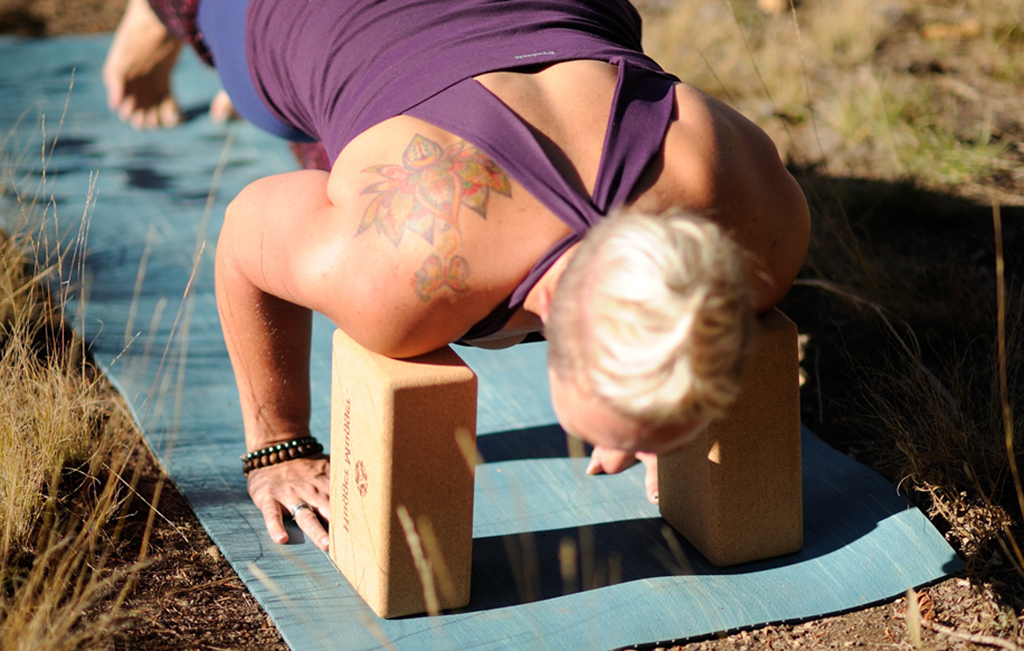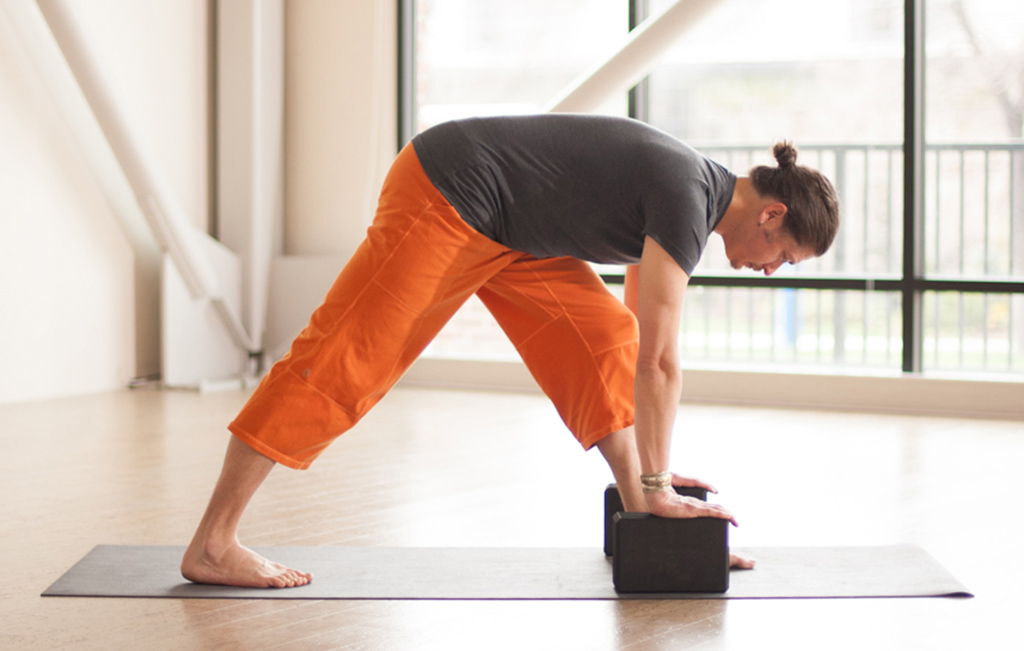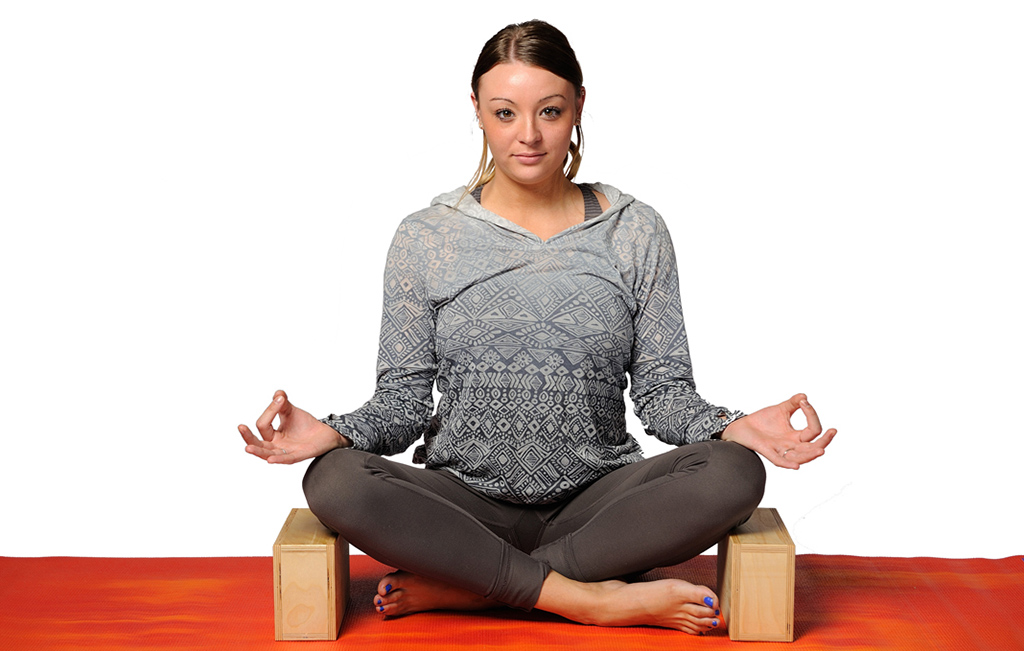Yoga blocks were invented by B.K.S. Iyengar decades ago. Iyengar is best known as the first widely known yoga teacher to emphasize alignment in asana practice. Yoga blocks were one of the tools he developed to help practitioners align their bodies—and therefore, calm their minds.
Hugger Mugger began manufacturing and selling yoga blocks in the 1980s. We took Iyengar’s original dimensions—4″x6″x9″—and crafted our own blocks. (HM’s founder, Sara Chambers, was a woodworker before she started the company.) Back then, all yoga blocks were made from wood. Many of them were solid pine, and as a result, super heavy. Not only were they a bear for a teacher to carry from class to class, but they were downright painful if one happened to fall on your toes.
Since then, Hugger Mugger has developed blocks that are made from lighter, softer materials. Now blocks are made from foam (new and recycled), cork, bamboo and hard wood. The wood blocks are now hollow so they’re considerably lighter than the old-style blocks.
Here’s where you can find more information about the various block types:
- 4-Inch Foam Block (The Studio Staple)
- 3-Inch Foam Block (A Little Bit of Lift)
- Marbled Foam Block (Fun & Funky)
- Big Foam Block (Extra Large Support)
- Recycled Foam Block (Recycled & Recyclable)
- Cork Yoga Block (The Eco Favorite)
- Wood Yoga Block (The Iyengar Classic)
- Bamboo Yoga Block (Insanely Renewable)
So how do you use yoga blocks? Read on for just three of many, many examples.
3 Poses Made Easier with Yoga Blocks
- Chaturanga Dandasana (Four-Limbed Staff Pose): Shoulder strain, even tendon tears can come relying too much on arm and shoulder strength when you practice Chaturanga. Unhealthy alignment can also cause chronic shoulder strain. Practicing with care and mindfulness is essential. Using yoga blocks in Chaturanga can teach your shoulders proper alignment by preventing the shoulders from pushing forward. Yoga Blocks can also take some of the load off your shoulders—both literally, and by teaching the rest of the body to step up to the plate. Here’s a post that explains how the position of a small bone you may never have heard of, the hyoid bone, can strengthen your Chaturanga by making aligning your structure and engaging your core. This post gives detailed instructions for using yoga blocks in Chaturanga Dandasana.

- Parsvottanasana (Intense Side Stretch or Pyramid Pose): Parsvottanasana stretches your hamstrings as it lengthens your spine. It stabilizes and challenges your balancing abilities and energizes your legs. However, sometimes the relationship between the hamstrings and back needs to be brought into balance. For most of us, moving too far forward in the pose will cause the back to round and the front torso to contract. If your back rounds, causing your front body to contract when you place your hands on the floor, blocks can help. This not only effectively “raises the floor,” but it also gives you something substantial to press into to help you lengthen your legs and torso even more. Here’s a post that gives a more detailed explanation.

- Sukhasana (Easy Pose): For many people the name “Easy Pose” is a bit of a misnomer. If your hip joints are constructed in such a way that they don’t easy rotate externally, Sukhasana can be quite difficult. Another challenge in Sukhasana is that some people’s knees become uncomfortable. Most of my students feel relief from knee pain by simply placing blocks under their knees. Elevating the knees lessens the pull of the inner thigh muscles, and can relieve stress on the various tissues of the inner knees. Other poses can benefit from using blocks in this way as well, including Baddha Konasana (Bound Angle Pose) and Janu Sirsasana (Head-of-the-Knee Pose).

